Women and beach culture in Queensland: From ladies “on the reel” to the bathing beauty controversy of 1938
By Christina Ealing-Godbold, Research Librarian, Information and Client Services | 16 February 2021
During the 1920s and 1930s details of beach holidays and their various accompanying entertainments filled newspapers and magazines. Women played many important roles in this beach culture, including cooking in the family tent, minding children in the shallows, participating in lifesaving events and playing in the dance bands and orchestras. Women were also important auxiliary members of the beach surf clubs, providing tea and sandwiches where required. Mass picnics were organised by community groups at popular beaches and included sandcastle competitions, sand garden competitions, lifesaving displays and beach sports. More controversially, women also provided entertainment as ‘Bathing Beauties”, a popular pastime during the 1930s.
The development of Queensland’s beach culture was not without controversy. Despite early misgivings about women “on the reel” as patrolling lifesavers, by 1929 the Alexandra Headlands and Neptune Ladies Life Saving Club had joined forces to keep beach goers safe. The Neptune Ladies Life Saving Club in fact captured the trophy from many male clubs at the Mooloolaba Life Saving Carnival in Easter 1932. The women proved their ability at both life saving skills and the physical tasks of hauling in the swimmers to safety regardless of tides and pounding surf. Yet in 1947, the State Superintendent for Surf Lifesaving announced that it was a “job for men” and that women could no longer compete in carnivals – a ban that remained in force until the late 1970s. Women are now an important part of the Surf Life Saving movement and competitions.
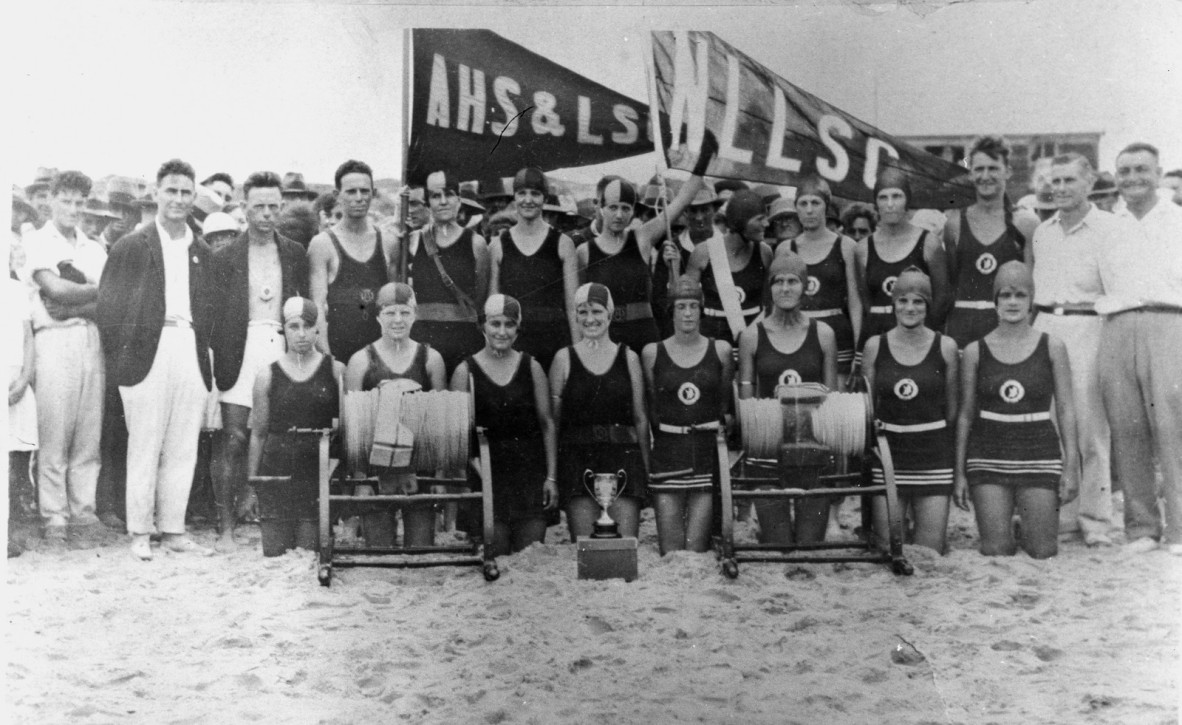
Alexandra Headland Surf & Life Saving Club and Neptune Ladies’ Life Saving Club, ca. 1929. John Oxley Library, State Library of Queensland Neg No: 189437.
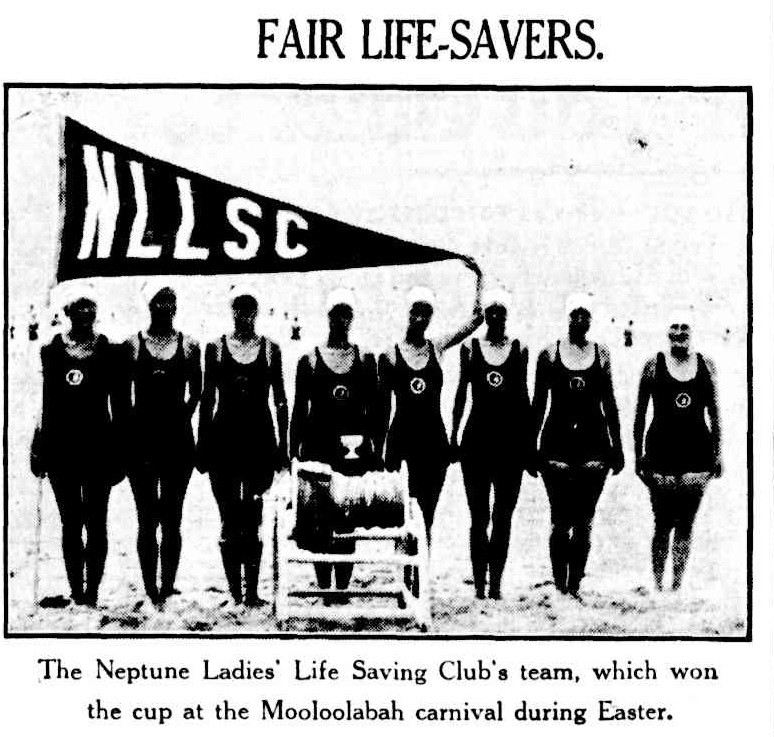
The Brisbane Courier, 2 April 1932, p 16. Image from Trove.
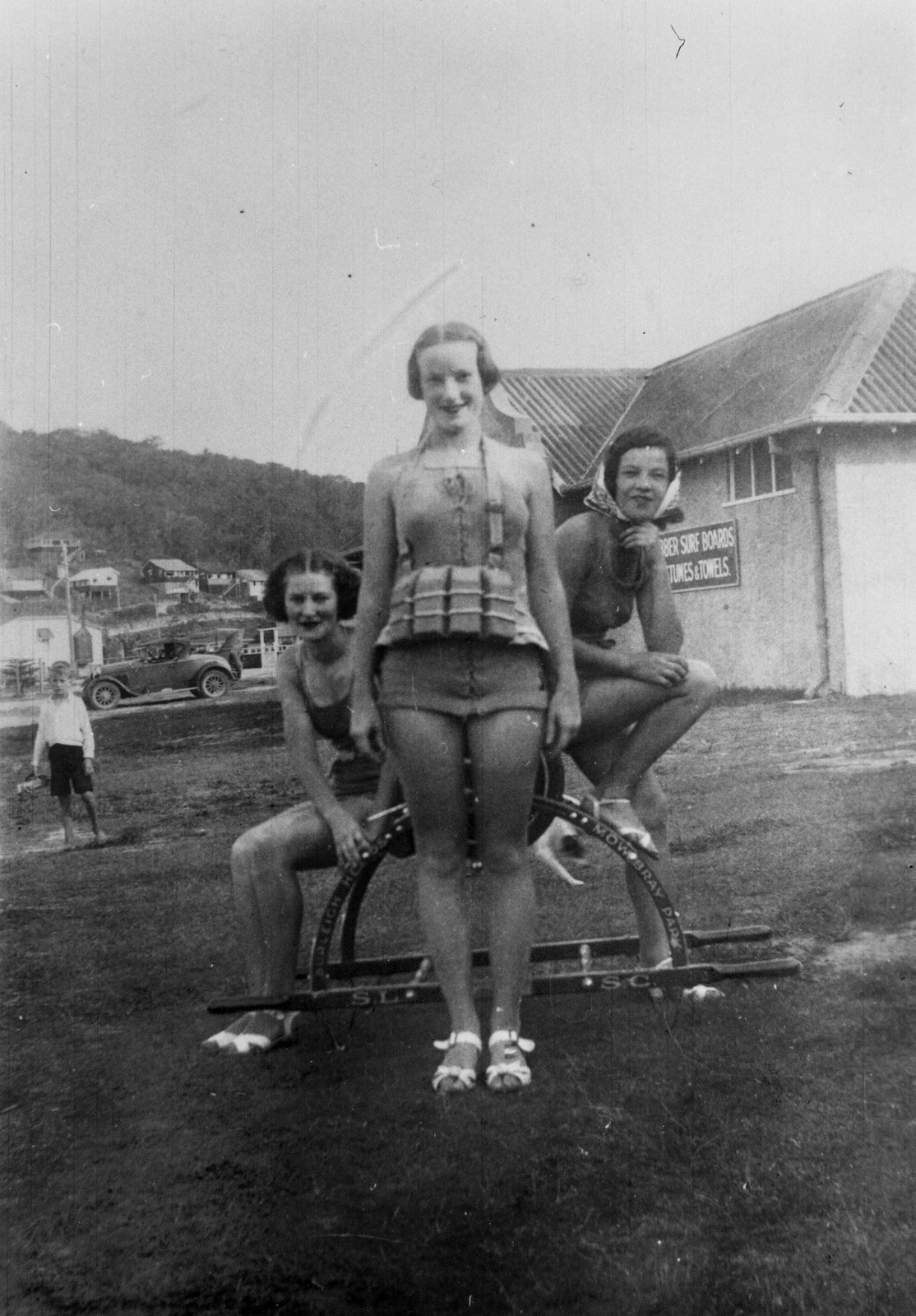
Three young women posing near the Burleigh Heads surf club, 1937. John Oxley Library, State Library of Queensland, Neg No: 42047.
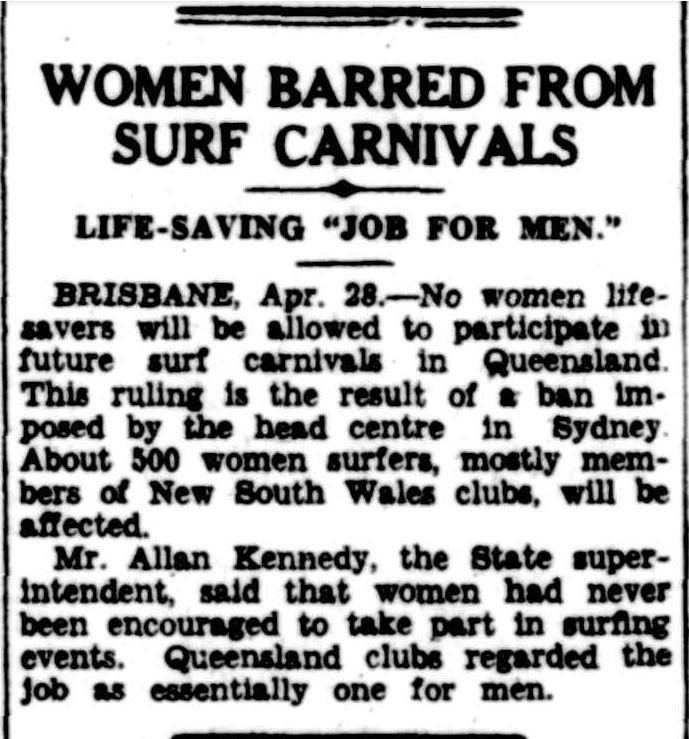
Cairns Post, 29 April 1947, p 5. Image from Trove.
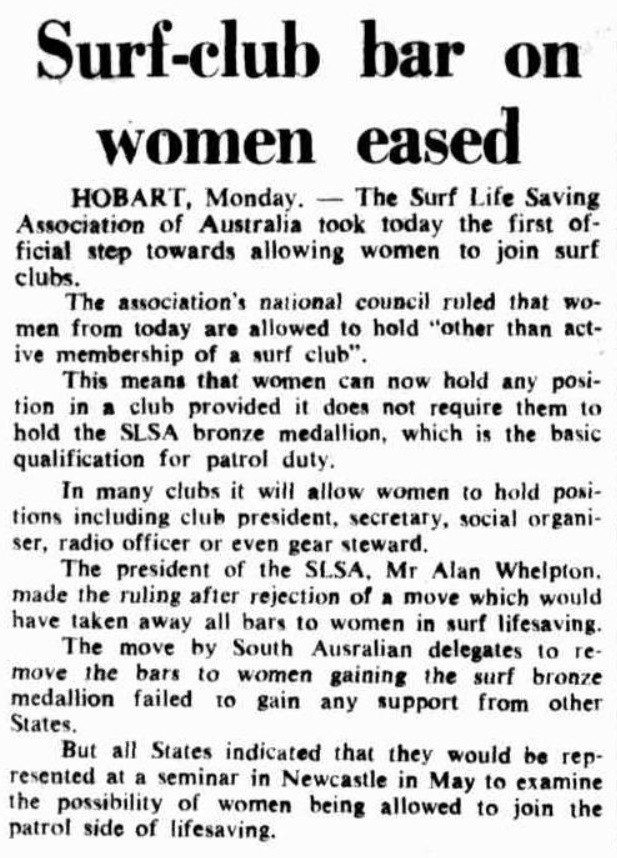
The Canberra Times, 16 March 1976, p 18. Image from Trove.
Even more controversy surrounded the competitions for bathing beauties, held at beaches throughout Queensland. An integral part of the beach holiday was the entertainment – the dances, competitions and displays on the beach. One of the competitions that gained popularity in the 1930s was the Bathing Beauty competition. Young women paraded in swimming costumes for local judges, and cash prizes of five pounds and more were available to be won. Bathing Beauty competitions were sponsored by radio stations, well- known local companies and newspaper publishers. The 4BC radio station sponsored the “Belle of the Beach” competition as part of its regular picnics at Southport. Here are the four prize winners in the 1936 competition.
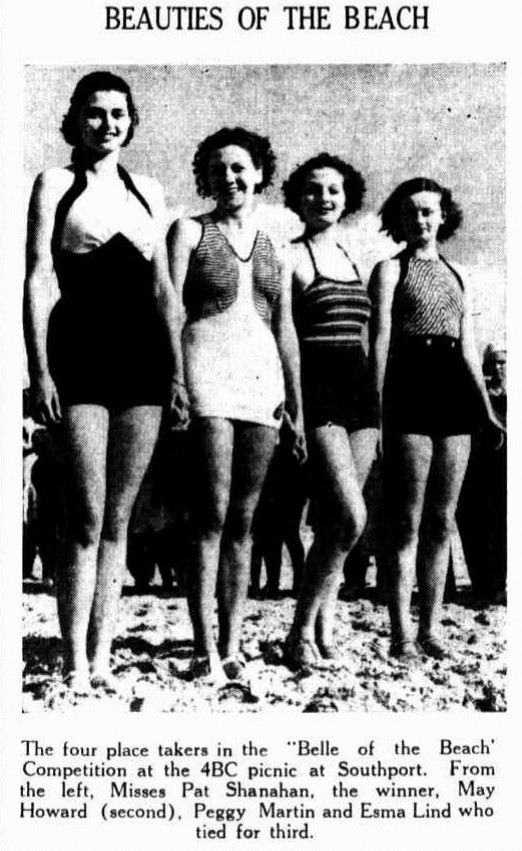
The Telegraph (Brisbane), 21 September 1936 (second edition), p 1. Image from Trove.
A feature of the competitions was the inevitable “line up of beauties” in increasingly more revealing costumes, which to contemporary eyes appear very modest. The parading of young women was considered scandalous.
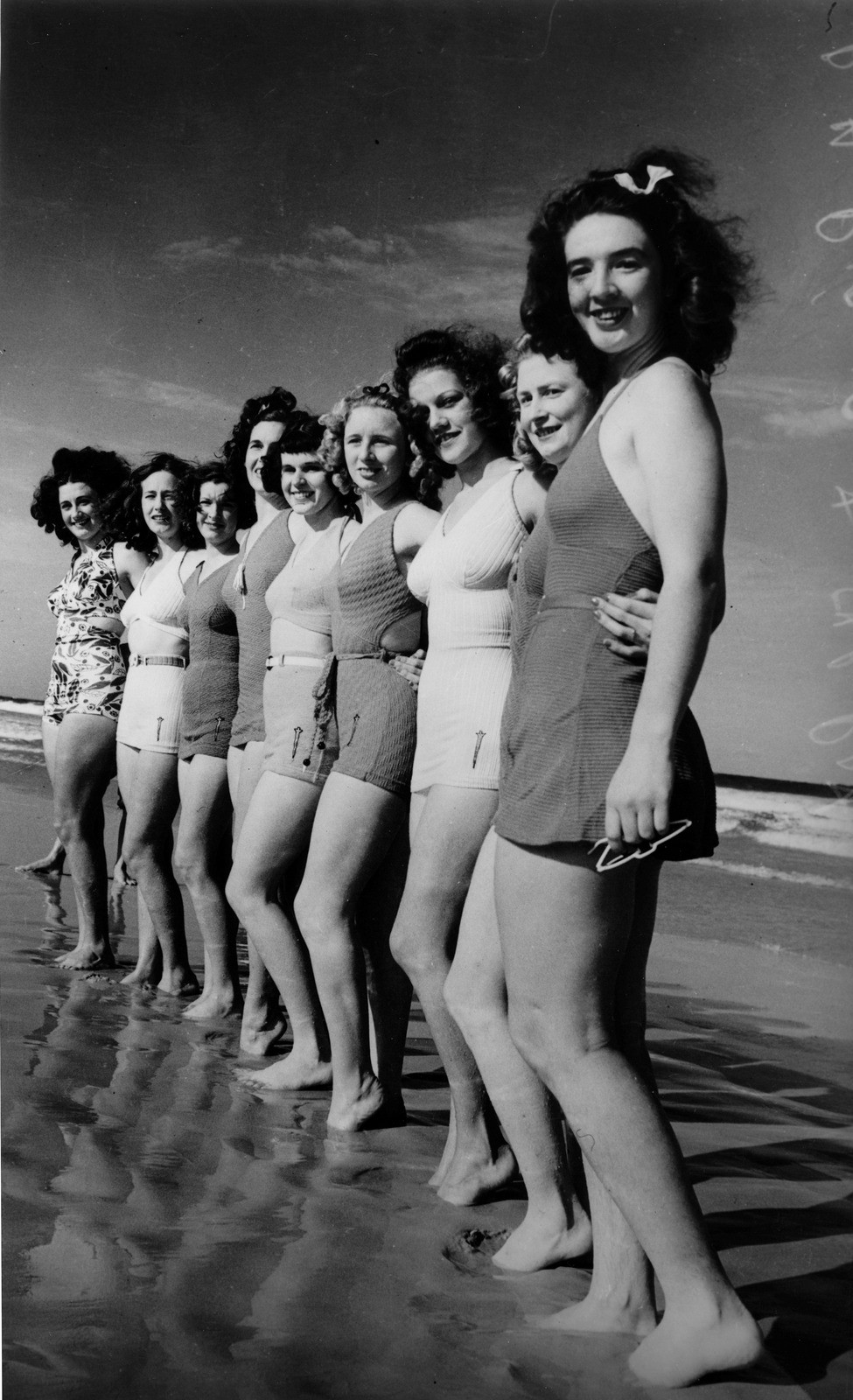
Beach beauties, ca. 1939. John Oxley Library, State Library of Queensland Neg No: 109917.
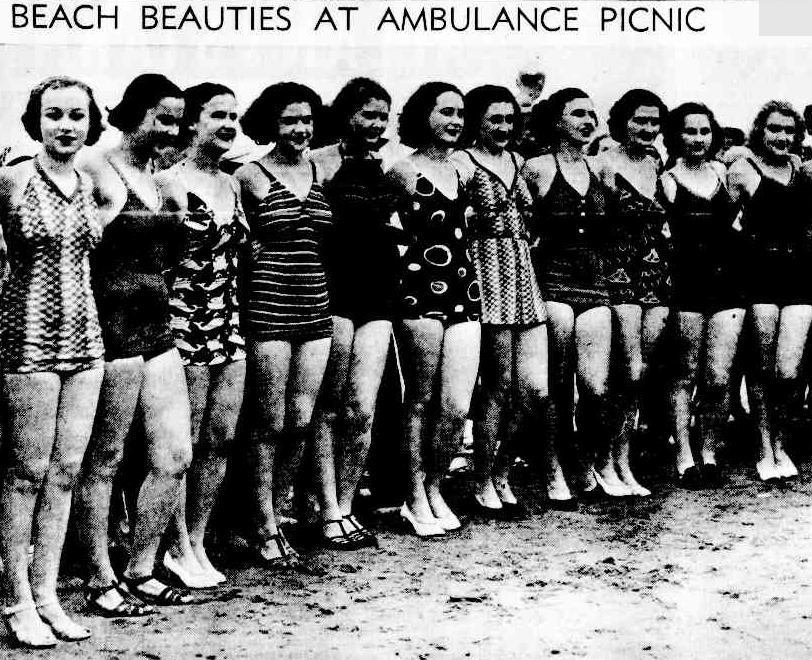
Paraded in front of 60,000 people, these Beach Beauties compete for the title of Bathing Beauty at the Ambulance Picnic of 1937 at Redcliffe.
The Courier Mail, 11 October 1937, p 16. Image from Trove.
Those who felt it important to uphold morals began to complain about the bathing beauty competitions. Archbishops and other church representatives, as well as women’s groups and other local community organisations, felt the need to express their displeasure. The Women’s Christian Temperance Union wrote to Redcliffe Shire Council in 1937, saying that they desired
to bring under your notice the grave danger to the youths of our country from the beauty competitions … To invite our young women, the future mothers of our nation, during their most impressionable years to themselves to enter a competition in which their bodies are very scantily clothed and they are required to parade before the public of all ages and sexes is, we submit, not only unworthy but degrading and is calculated to result in a lowered standard of ideals and practices and not infrequently in disaster.”
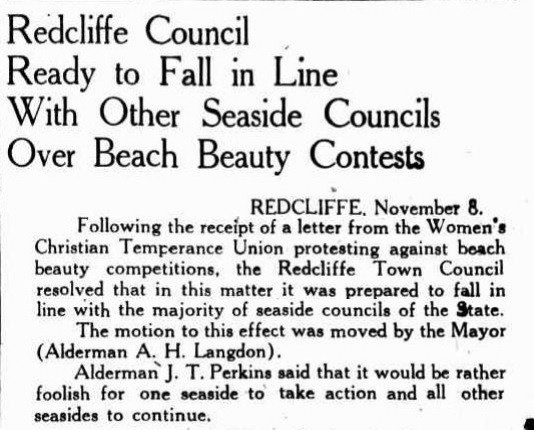
The Telegraph (Brisbane), 8 November 1937 (second edition), p 14. Image from Trove.
To decide the fate of the bathing beauty competition, a conference was held at Landsborough in 1938, where men of each council voted on the proposal to ban these competitions. Delegates of Maroochy, Noosa, Nerang, Southport, Coolangatta and Redcliffe authorities met, with a majority of councillors being against the competitions.
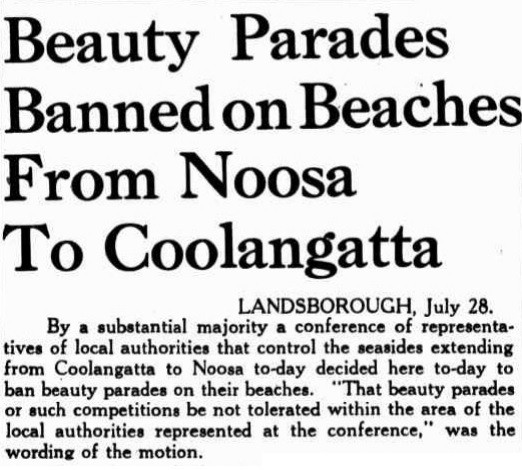
The Telegraph (Brisbane), 28 July 1938 (second edition), p 1. Image from Trove.
Yet a problem arose – where did the councillors have the power to enact such a ban. Did their authority not cease at the water line? And was that the high water mark or the low water mark?
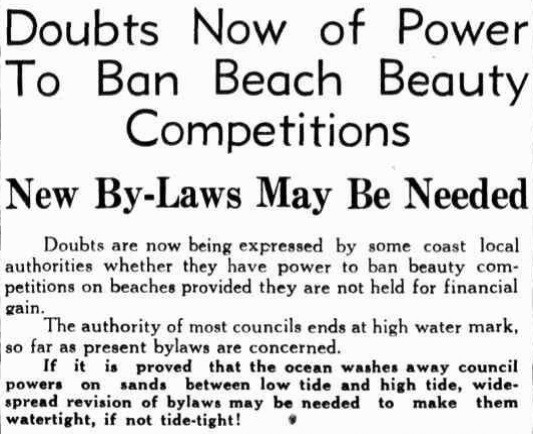
The Telegraph (Brisbane), 15 June 1938 (City Final Last Minute News), p 8. Image from Trove.
The ban was upheld, and beauty competitions could only be held if the contestants wore beach or sports dress and the line-up and parading of beauties was no longer a feature. Those selecting the prize winners now included women as well as men. Later, in the 1950s and 1960s, much debate arose about the appearance of the bikini on the beach as fashion sought once more to push the boundaries of social acceptance.
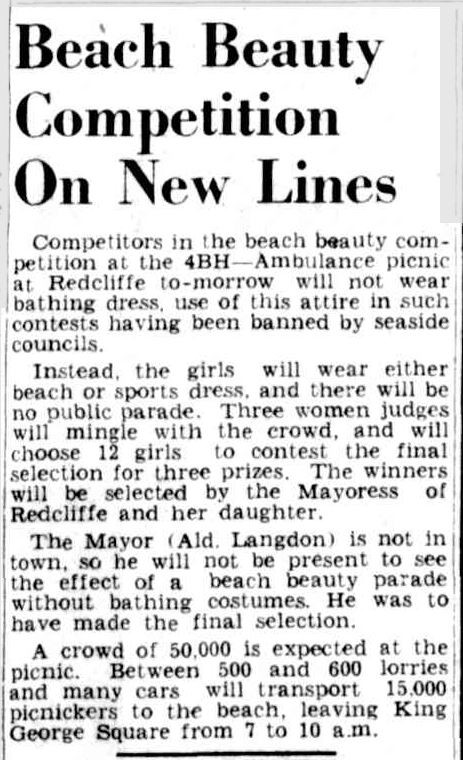
The Courier Mail, 29 October 1938, p 3. Image from Trove.
Beach activities were more limited during the war period due to petrol rationing and the fact that some beaches became inaccessible for defence security reasons. Bathing beauty competitions did not resume in South East Queensland until after the Second World War, although never in quite the same format of parading line-ups that were prevalent in the 1930s.
Whether as surf life savers, surfers on boards, swimmers, campers or models of beach fashion wear, women carved out their various roles in Queensland beach culture amid debate and controversy.
Find out more about our social history in the One Search catalogue at State Library of Queensland, and by using photographs, newspapers and ephemeral collections. Find the detail of interesting social controversies of earlier eras.
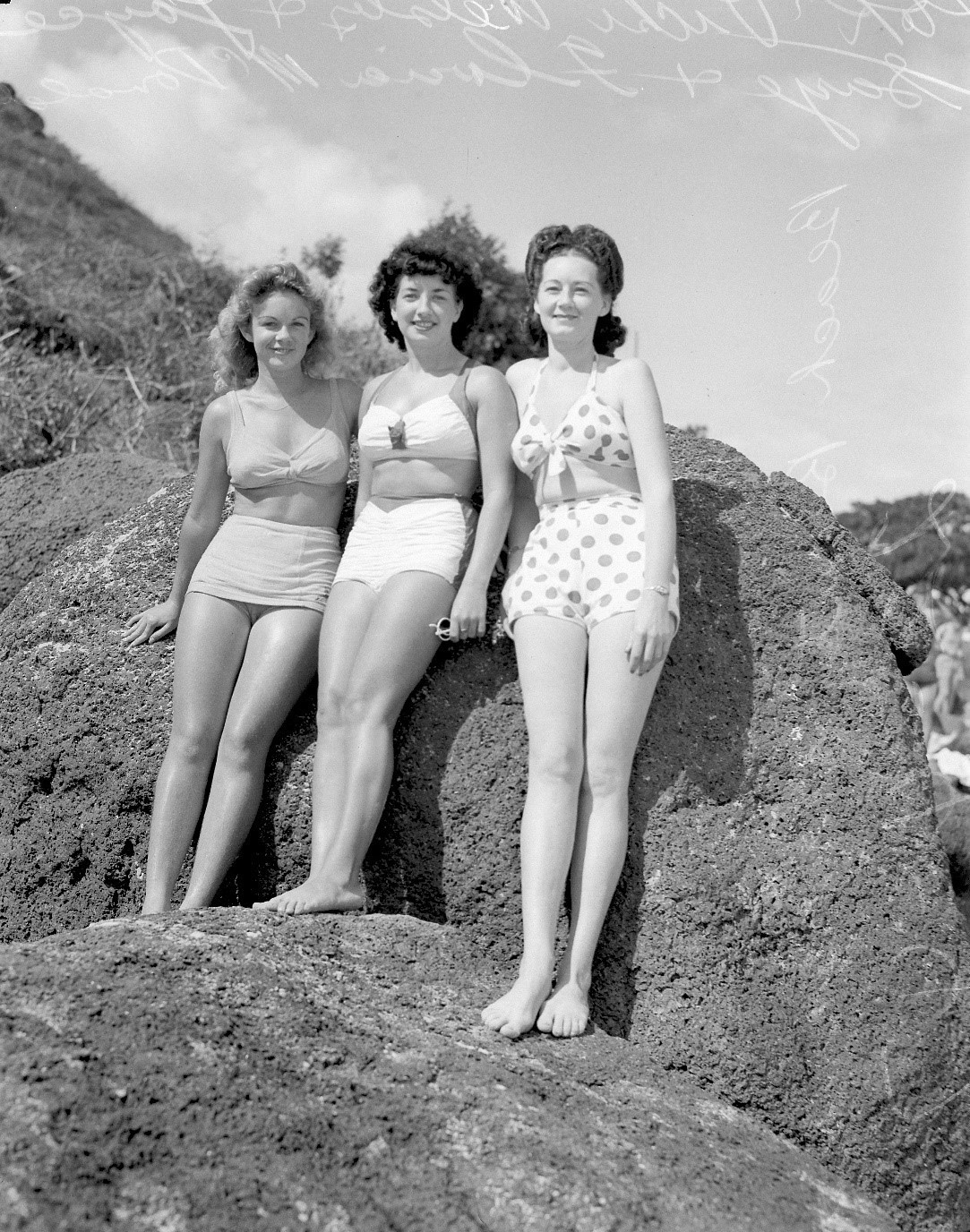
Beach Beauty Contest at Greenmount, Gold Coast, 1947. John Oxley Library, State Library of Queensland Image No: 28118-0001-1117.
More information
One Search - http://onesearch.slq.qld.gov.au
Comments
Your email address will not be published.
We welcome relevant, respectful comments.